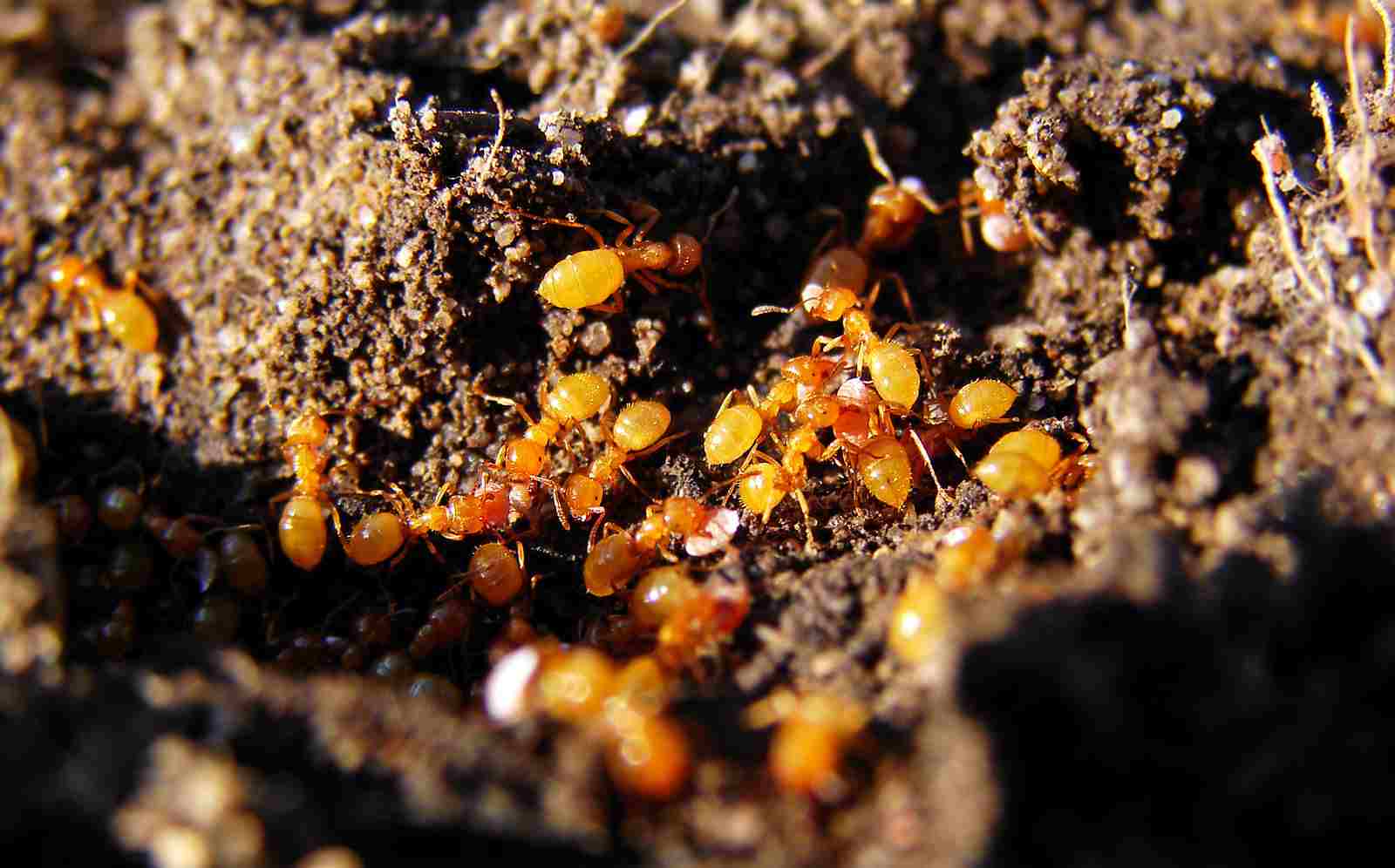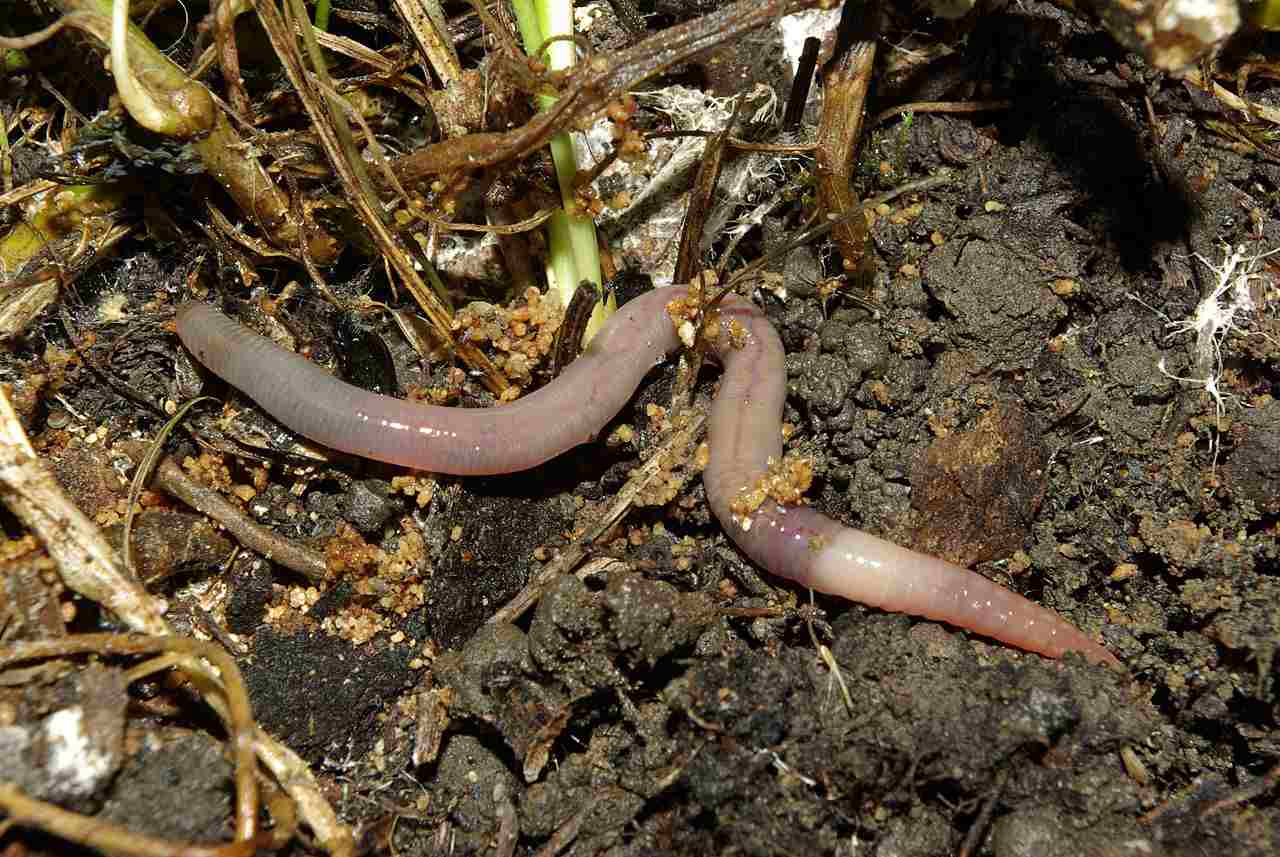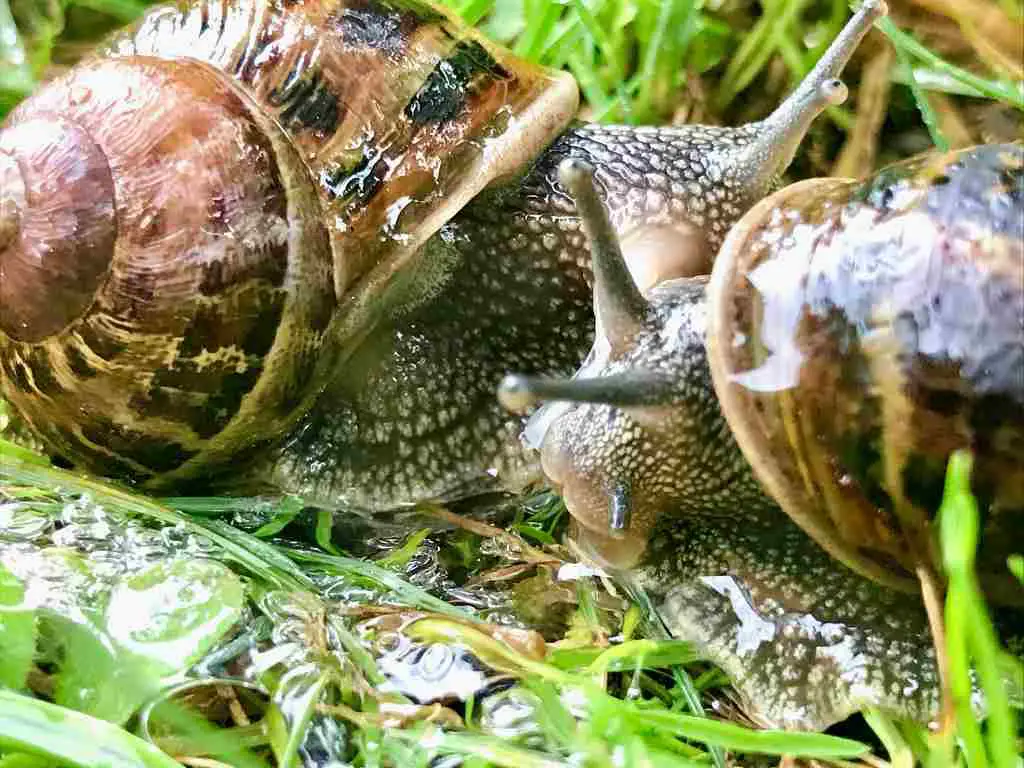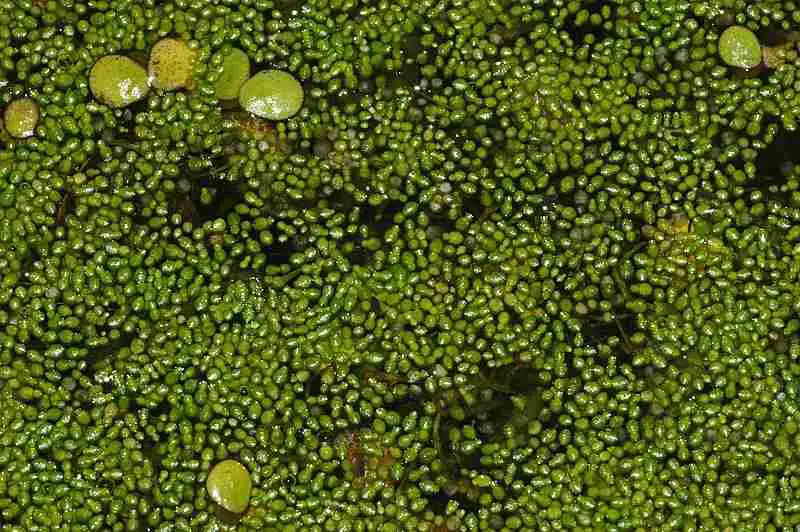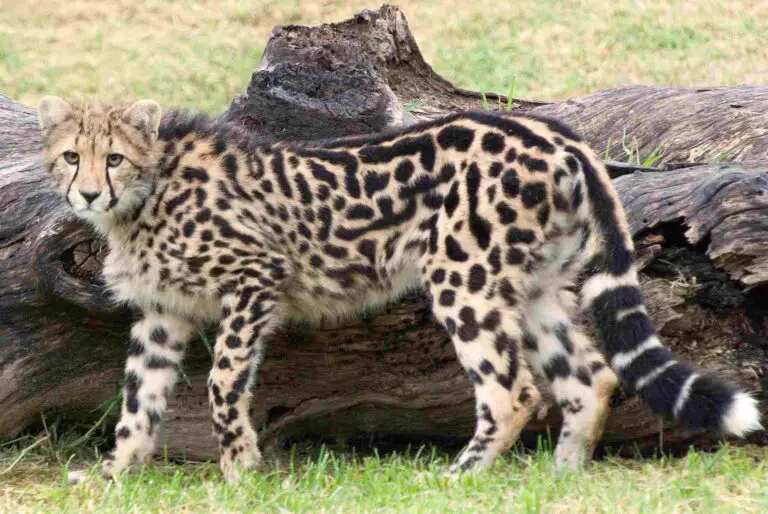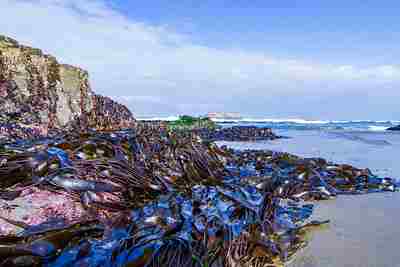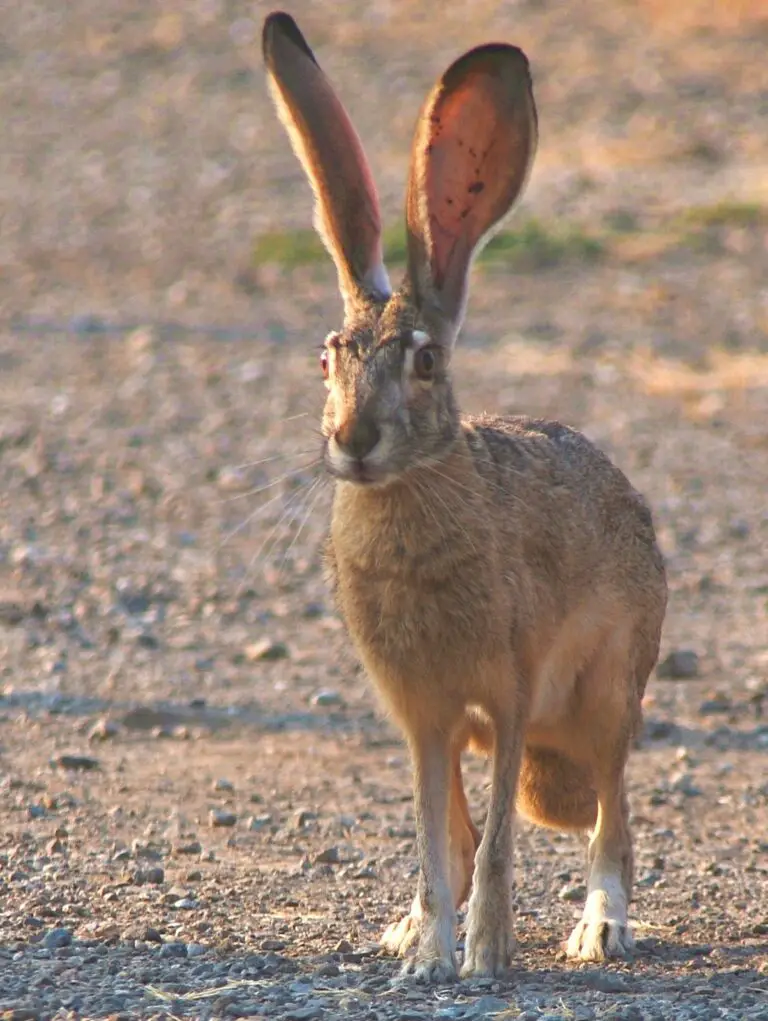What Are The Detritivores In Alaska? 17 Examples Discussed
Examples of detritivores in Alaska include earthworms, springtails, mites, woodlice, millipedes, beetles, slugs, snails, ants, bristle worms, black fly larvae, caddisfly larvae, mayfly larvae, stonefly larvae, crane fly larvae, crayfish, and amphipods. These organisms play crucial roles in breaking down organic matter, contributing to nutrient cycling, promoting soil and water quality, and serving as food sources for a variety of predators. They are foundational to maintaining the health and sustainability of Alaska’s ecosystems.
1. Earthworms
Earthworms are essential detritivores in Alaska’s ecosystems, playing a significant role in soil formation and nutrient cycling. These soft-bodied annelids contribute to the decomposition of organic matter by ingesting soil and leaf litter, breaking them down in their digestive systems, and excreting nutrient-rich castings. Through this process, earthworms increase soil aeration and water infiltration, creating a more conducive environment for plant growth and fostering microbial activity. Their burrowing activities help mix soil layers and bring organic matter into deeper levels, promoting root growth and stabilizing the soil structure.
In Alaska’s colder climates, earthworms have adapted to shorter seasons and fluctuating temperatures, with some species capable of withstanding freezing conditions. They tend to thrive in areas with abundant organic matter, such as forests, gardens, and meadows, where they play a crucial role in recycling nutrients and enhancing soil health. While earthworms are generally beneficial to the ecosystem, some invasive species can alter soil composition and disrupt native plant communities, necessitating careful monitoring and management in sensitive environments. Overall, earthworms are key contributors to the health and sustainability of Alaskan ecosystems, demonstrating the interconnectedness of soil health and broader environmental dynamics.
2. Springtails (Collembola)
Springtails, members of the Collembola order, are among the most abundant and diverse detritivores in Alaska’s ecosystems. They are small, wingless arthropods known for their ability to “spring” using a specialized appendage called the furcula, which they use to evade predators. Springtails play a crucial role in the decomposition of organic matter, consuming decaying plant material, fungi, and bacteria. Through their feeding and burrowing activities, they contribute to soil structure and nutrient cycling, promoting microbial activity and breaking down organic compounds into simpler forms that plants can use.
In Alaska’s colder regions, springtails are particularly resilient, with some species adapted to extreme environments like the tundra. Their ability to thrive in diverse habitats, from forest floors to arctic soils, makes them key contributors to the ecological balance. By consuming detritus and participating in nutrient cycling, springtails indirectly support plant growth and soil health. They are also a vital food source for other organisms, including spiders and beetles, highlighting their importance in the food web.
3. Mites (Acari)
Mites, belonging to the order Acari, are diverse and abundant detritivores in Alaska. They play a critical role in the decomposition process by feeding on dead plant material, fungi, and other organic matter. Mites are generally microscopic, but their collective impact on soil health and nutrient cycling is significant. They contribute to the breakdown of organic matter, releasing nutrients that support plant growth and fostering microbial communities in the soil.
Alaska’s mites can be found in various environments, from forests to tundra. Some are highly specialized, with adaptations that allow them to survive extreme cold and seasonal variations. Their presence in the ecosystem is essential for maintaining soil structure and promoting a balanced nutrient cycle. Moreover, mites serve as a food source for other detritivores and predators, demonstrating their importance in Alaska’s complex food web.
4. Woodlice (Isopoda)
Woodlice, also known as isopods, are crustaceans often associated with moist environments and are essential detritivores in Alaska’s ecosystems. They are characterized by their segmented, armored exoskeletons and are often found in leaf litter, under rocks, and decaying wood. Woodlice play a critical role in decomposing organic matter, feeding on decaying plant material, fungi, and other detritus. As they consume and break down these materials, they contribute to soil formation and nutrient cycling, supporting plant growth and soil health.
In Alaska, woodlice are adapted to cooler climates and can be found in a variety of habitats. Their activity helps to aerate soil and promote microbial activity, creating a healthy environment for other organisms. Additionally, woodlice are an important food source for birds, amphibians, and other predators, reinforcing their role in the food web. By breaking down organic matter and participating in nutrient cycling, woodlice play an essential role in maintaining the ecological balance in Alaska’s diverse ecosystems.
5. Millipedes (Diplopoda)
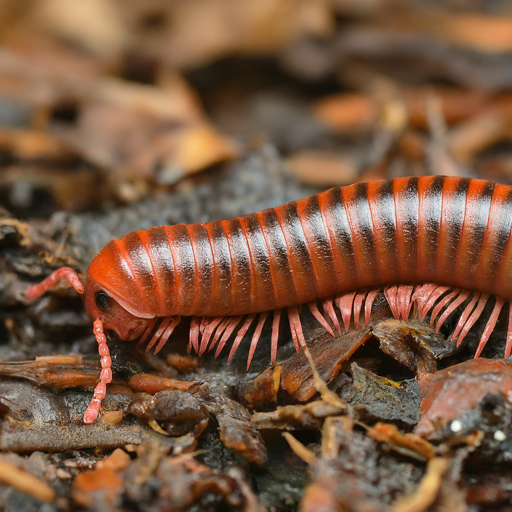
Millipedes, members of the class Diplopoda, are another group of important detritivores in Alaska’s ecosystems. With their elongated bodies and numerous legs, millipedes are commonly found in moist environments where they feed on decaying plant material, contributing to nutrient cycling and soil formation. As millipedes consume and break down organic matter, they release nutrients into the soil, fostering plant growth and supporting microbial activity.
In Alaska, millipedes must contend with cooler temperatures and shorter seasons, adapting to these conditions by seeking shelter in leaf litter, under rocks, or within rotting wood. Their burrowing activities help aerate soil and mix organic matter into deeper layers, promoting a healthy and productive environment. Millipedes also play a role in the food web, serving as prey for birds, amphibians, and other predators. By contributing to the decomposition process and soil health, millipedes are a key component of Alaska’s ecosystems.
6. Beetles (Coleoptera)
Beetles, belonging to the order Coleoptera, are a highly diverse group of insects that serve as crucial detritivores in Alaska’s ecosystems. Many beetles, including species like the carrion beetle and various types of rove beetles, feed on decaying plant material, animal remains, and fungi. These beetles play an essential role in the decomposition process, breaking down complex organic compounds into simpler forms that can be absorbed by plants and other organisms, thus promoting nutrient cycling and soil health.
In Alaska, beetles can be found in a range of habitats, from dense forests to open tundra. They have various adaptations that allow them to thrive in cooler climates, including robust exoskeletons and behaviors that help them survive seasonal changes. Some beetles are specialized to consume specific types of detritus, while others have a more generalist diet. These beetles contribute to the broader food web by serving as a food source for birds, small mammals, and other predators. Overall, beetles play an indispensable role in maintaining the ecological balance in Alaska’s diverse ecosystems.
7. Slugs
Slugs, which are essentially snails without shells, are a common sight in Alaska’s ecosystems, serving as key detritivores. These soft-bodied gastropods feed on a variety of organic matter, including decaying plant material, fungi, and even dead insects. By consuming and breaking down these materials, slugs contribute to nutrient cycling and soil health, helping to create a fertile environment for plant growth. Slugs are also known for their role in decomposing leaf litter and other organic debris, promoting soil structure and microbial activity.
In Alaska, slugs must adapt to cooler climates and changing seasons, often seeking shelter under rocks, within leaf litter, or in other moist environments to avoid freezing temperatures. Their activities play a critical role in soil formation and nutrient distribution, as they process detritus and return valuable nutrients to the soil. Moreover, slugs are a food source for various predators, including birds and small mammals, highlighting their importance in the food web. Despite being slow-moving, slugs are efficient decomposers, contributing significantly to Alaska’s ecological health.
8. Snails
Snails, members of the class Gastropoda, are important detritivores in Alaska’s ecosystems, contributing to nutrient cycling and soil health. Like slugs, snails consume a variety of organic matter, including decaying plant material, fungi, and even animal remains. Their distinctive shells provide protection and help them retain moisture, allowing them to survive in diverse environments. By feeding on detritus, snails aid in breaking down organic matter, releasing nutrients into the soil, and fostering microbial activity.
In Alaska, snails can be found in a variety of habitats, from forests to wetlands. Their role in decomposition and nutrient cycling is vital, as they help maintain soil structure and support plant growth. The presence of snails also indicates a healthy ecosystem, as they are sensitive to environmental changes and pollution. Additionally, snails are a food source for birds, mammals, and other predators, demonstrating their role in the food web. Overall, snails contribute significantly to the ecological balance in Alaska’s diverse ecosystems through their activities as detritivores.
9. Ants
Ants, members of the family Formicidae, are social insects that play a key role as detritivores in Alaska’s ecosystems. These industrious insects form colonies and engage in a variety of activities that contribute to decomposition and nutrient cycling. Ants feed on a wide range of organic matter, including dead insects, decaying plant material, and fungi, helping to break down these materials and distribute nutrients throughout the environment. Ant colonies are also known for their role in aerating soil and promoting microbial activity.
In Alaska, ants must contend with cooler climates and seasonal variations, often building nests underground or in protected areas to avoid harsh conditions. Despite their small size, ants are significant contributors to soil formation and nutrient cycling. They also play an important role in the food web, serving as a food source for birds, small mammals, and other predators. Additionally, ant colonies can impact plant communities by distributing seeds and aerating the soil. By engaging in these activities, ants help maintain the ecological balance and promote soil health in Alaska’s ecosystems.
10. Bristle Worms (Polychaeta)
Bristle worms, members of the class Polychaeta, are segmented marine worms that play a crucial role as detritivores in Alaska’s coastal ecosystems. These worms have bristle-like appendages, which they use for movement and feeding. Bristle worms consume a variety of organic matter, including decaying plant material, dead organisms, and other detritus, helping to break down these materials and contribute to nutrient cycling in marine environments. By engaging in these activities, bristle worms play a vital role in maintaining the health and balance of coastal and marine ecosystems.
In Alaska, bristle worms can be found in various marine habitats, from shallow coastal areas to deeper ocean regions. They are well-adapted to colder water temperatures and are often found burrowing in sediment or hiding among rocks and other structures. Bristle worms’ feeding and burrowing activities help aerate the seabed and distribute nutrients, fostering a healthy environment for other marine organisms. Additionally, bristle worms are a food source for fish, birds, and other marine predators, highlighting their role in the food web. By contributing to the decomposition process and nutrient cycling, bristle worms play a key role in Alaska’s marine ecosystems.
11. Black Fly Larvae
Black fly larvae, part of the family Simuliidae, are important detritivores in Alaska’s freshwater ecosystems. These aquatic larvae are often found in flowing water, where they attach themselves to rocks and other substrates. Black fly larvae feed on organic matter suspended in the water, such as algae and detritus, contributing to nutrient cycling and water quality. By filtering organic particles from the water, black fly larvae help maintain the health of freshwater ecosystems, providing a vital service in nutrient redistribution and supporting microbial activity.
In Alaska, black fly larvae are common in rivers and streams, where they thrive in cooler, oxygen-rich waters. Their presence is an indicator of good water quality, as they are sensitive to pollution and other environmental changes. The feeding activities of black fly larvae also play a role in maintaining the clarity of freshwater systems by reducing the amount of suspended organic matter. Additionally, black fly larvae are an essential food source for fish and other aquatic predators, reinforcing their role in the food web. By contributing to nutrient cycling and supporting water quality, black fly larvae are a key component of Alaska’s freshwater ecosystems.
12. Caddisfly Larvae
Caddisfly larvae, belonging to the order Trichoptera, are essential detritivores in Alaska’s freshwater ecosystems. These larvae are known for their unique behavior of building protective cases from materials found in their environment, such as twigs, leaves, and small stones. Caddisfly larvae feed on organic matter, including decaying plant material and detritus, which they find in freshwater streams and rivers. Their feeding activities contribute to nutrient cycling and help maintain water quality by filtering organic particles.
In Alaska, caddisfly larvae are found in various freshwater habitats, typically preferring cooler, oxygen-rich waters. Their role in the ecosystem extends beyond nutrient cycling, as they are also a critical food source for fish, amphibians, and other aquatic predators. By breaking down organic matter and filtering the water, caddisfly larvae play a vital role in supporting the health and balance of Alaska’s freshwater ecosystems. The cases they construct can also help stabilize streambeds and contribute to the structure of aquatic environments.
13. Mayfly Larvae
Mayfly larvae, part of the order Ephemeroptera, are key detritivores in Alaska’s freshwater ecosystems. These aquatic larvae are typically found in flowing water, where they feed on organic matter and algae. Mayfly larvae play a critical role in nutrient cycling, helping to break down organic materials and contribute to the overall health of freshwater systems. Their presence in rivers and streams is often an indicator of good water quality, as they require clean, oxygen-rich environments to thrive.
In Alaska, mayfly larvae are widespread across various freshwater habitats. They are known for their relatively short life cycles and their importance in the food web, serving as a primary food source for fish and other aquatic predators. Mayfly larvae’s feeding activities also help maintain the clarity of water systems by reducing the buildup of organic matter. By contributing to nutrient cycling and supporting water quality, mayfly larvae play a crucial role in the sustainability of Alaska’s freshwater ecosystems.
14. Stonefly Larvae
Stonefly larvae, from the order Plecoptera, are crucial detritivores in Alaska’s freshwater ecosystems. These larvae are found in fast-flowing, cold streams and rivers, where they feed on a combination of organic matter, algae, and smaller invertebrates. Stonefly larvae contribute to nutrient cycling by breaking down organic materials and distributing them through the aquatic environment. Their presence is often used as an indicator of good water quality, given their sensitivity to pollution and habitat degradation.
In Alaska, stonefly larvae are common in mountainous regions and other areas with high-quality freshwater systems. Their feeding activities play a role in maintaining water clarity and supporting a healthy balance of nutrients. Additionally, stonefly larvae are a significant food source for fish, amphibians, and other aquatic predators, reinforcing their role in the food web. By contributing to nutrient cycling and serving as indicators of ecosystem health, stonefly larvae are a vital component of Alaska’s freshwater environments.
15. Crane Fly Larvae
Crane fly larvae, belonging to the family Tipulidae, are important detritivores in Alaska’s freshwater and terrestrial ecosystems. These larvae are commonly found in moist environments, such as wetlands, marshes, and riverbanks, where they feed on decaying plant material and other organic matter. Crane fly larvae play a crucial role in nutrient cycling and contribute to the decomposition process, helping to break down organic materials and support soil health.
In Alaska, crane fly larvae are adapted to cooler climates and are often found in areas with abundant moisture. Their feeding activities contribute to soil formation and promote a balanced nutrient cycle, benefiting plant growth and microbial activity. Crane fly larvae are also an essential food source for birds, fish, and other predators, demonstrating their role in the broader food web. By contributing to nutrient cycling and supporting ecosystem health, crane fly larvae are a valuable part of Alaska’s diverse environments.
16. Crayfish
Crayfish, members of the family Cambaridae, are significant detritivores in Alaska’s freshwater ecosystems. These freshwater crustaceans are known for their distinctive pincers and segmented bodies. Crayfish feed on a wide range of organic matter, including decaying plant material, dead animals, and other detritus, contributing to nutrient cycling and supporting the decomposition process. Their activities help maintain the health and balance of freshwater systems by breaking down organic materials and promoting a healthy aquatic environment.
In Alaska, crayfish can be found in various freshwater habitats, from rivers to lakes. They are well-adapted to cooler temperatures and often burrow into sediment or hide among rocks for protection. Crayfish play a vital role in the food web, serving as a food source for fish, birds, and other predators. Their feeding and burrowing activities also contribute to the structure of aquatic environments, promoting a balanced ecosystem. By contributing to nutrient cycling and supporting the health of freshwater systems, crayfish are a crucial part of Alaska’s ecosystems.
17. Amphipods (like Scuds)
Amphipods, commonly known as scuds, are small crustaceans that serve as key detritivores in Alaska’s freshwater and marine ecosystems. These tiny creatures are often found in aquatic environments, where they feed on decaying plant material, algae, and other organic matter. Amphipods play a crucial role in nutrient cycling and contribute to the decomposition process, helping to maintain the health of aquatic ecosystems and supporting microbial activity.
In Alaska, amphipods are found in a variety of aquatic habitats, from rivers and lakes to coastal areas. They are well-adapted to cooler temperatures and are often a significant part of the food web, serving as prey for fish, birds, and other predators. Amphipods’ feeding activities also contribute to the structure of aquatic environments, helping to break down organic matter and promote a balanced nutrient cycle. By playing a key role in nutrient cycling and supporting ecosystem health, amphipods are a vital component of Alaska’s diverse ecosystems.
*Summary
-
Earthworms: Decompose organic matter, promote soil health, nutrient cycling.
-
Springtails (Collembola): Break down organic material, support soil structure, key food source.
-
Mites (Acari): Decompose organic matter, support microbial activity, various habitats.
-
Woodlice (Isopoda): Feed on plant material, aerate soil, stabilize environments.
-
Millipedes (Diplopoda): Break down plant material, promote soil health, mix soil layers.
-
Beetles (Coleoptera): Consume decaying material, promote nutrient cycling, diverse habitats.
-
Slugs: Decompose organic matter, contribute to nutrient cycling, critical food source.
-
Snails: Break down plant material, support nutrient cycling, sensitive to pollution.
-
Ants: Feed on organic matter, aerate soil, significant food source.
-
Bristle worms (Polychaeta): Decompose marine detritus, promote marine nutrient cycling.
-
Black Fly Larvae: Consume organic particles, support water quality, essential food source.
-
Caddisfly Larvae: Break down organic matter, filter water, critical food source.
-
Mayfly Larvae: Consume organic material, promote nutrient cycling, sensitive to pollution.
-
Stonefly Larvae: Feed on plant matter, sensitive to water quality, significant food source.
-
Crane Fly Larvae: Decompose organic matter, promote soil formation, important food source.
-
Crayfish: Consume decaying material, promote aquatic health, significant food source.
-
Amphipods (like Scuds): Feed on decaying material, key marine detritivores, significant food source.
| Detritivores |
Role in Ecosystem
|
| Earthworms |
Decompose organic matter, promote soil health, nutrient cycling.
|
| Springtails (Collembola) |
Break down organic material, support soil structure, key food source.
|
| Mites (Acari) |
Decompose organic matter, support microbial activity, various habitats.
|
| Woodlice (Isopoda) |
Feed on plant material, aerate soil, stabilize environments.
|
| Millipedes (Diplopoda) |
Break down plant material, promote soil health, mix soil layers.
|
| Beetles (Coleoptera) |
Consume decaying material, promote nutrient cycling, diverse habitats.
|
| Slugs |
Decompose organic matter, contribute to nutrient cycling, critical food source.
|
| Snails |
Break down plant material, support nutrient cycling, sensitive to pollution.
|
| Ants |
Feed on organic matter, aerate soil, significant food source.
|
| Bristle worms (Polychaeta) |
Decompose marine detritus, promote marine nutrient cycling.
|
| Black Fly Larvae |
Consume organic particles, support water quality, essential food source.
|
| Caddisfly Larvae |
Break down organic matter, filter water, critical food source.
|
| Mayfly Larvae |
Consume organic material, promote nutrient cycling, sensitive to pollution.
|
| Stonefly Larvae |
Feed on plant matter, sensitive to water quality, significant food source.
|
| Crane Fly Larvae |
Decompose organic matter, promote soil formation, important food source.
|
| Crayfish |
Consume decaying material, promote aquatic health, significant food source.
|
| Amphipods (like Scuds) |
Feed on decaying material, key marine detritivores, significant food source.
|

